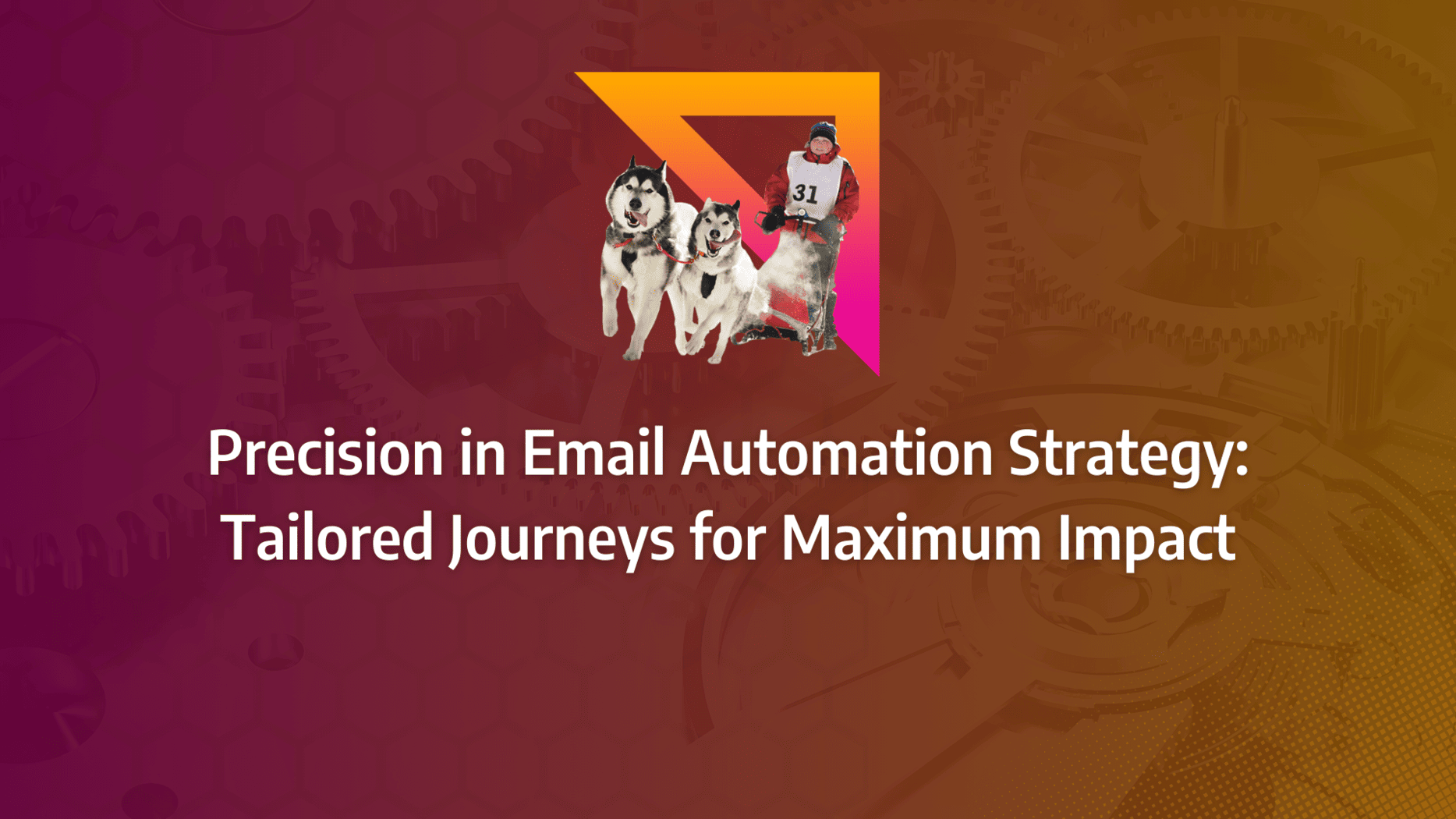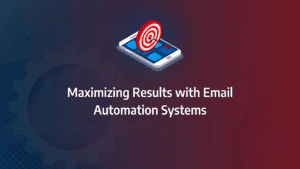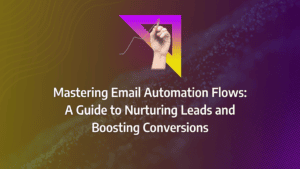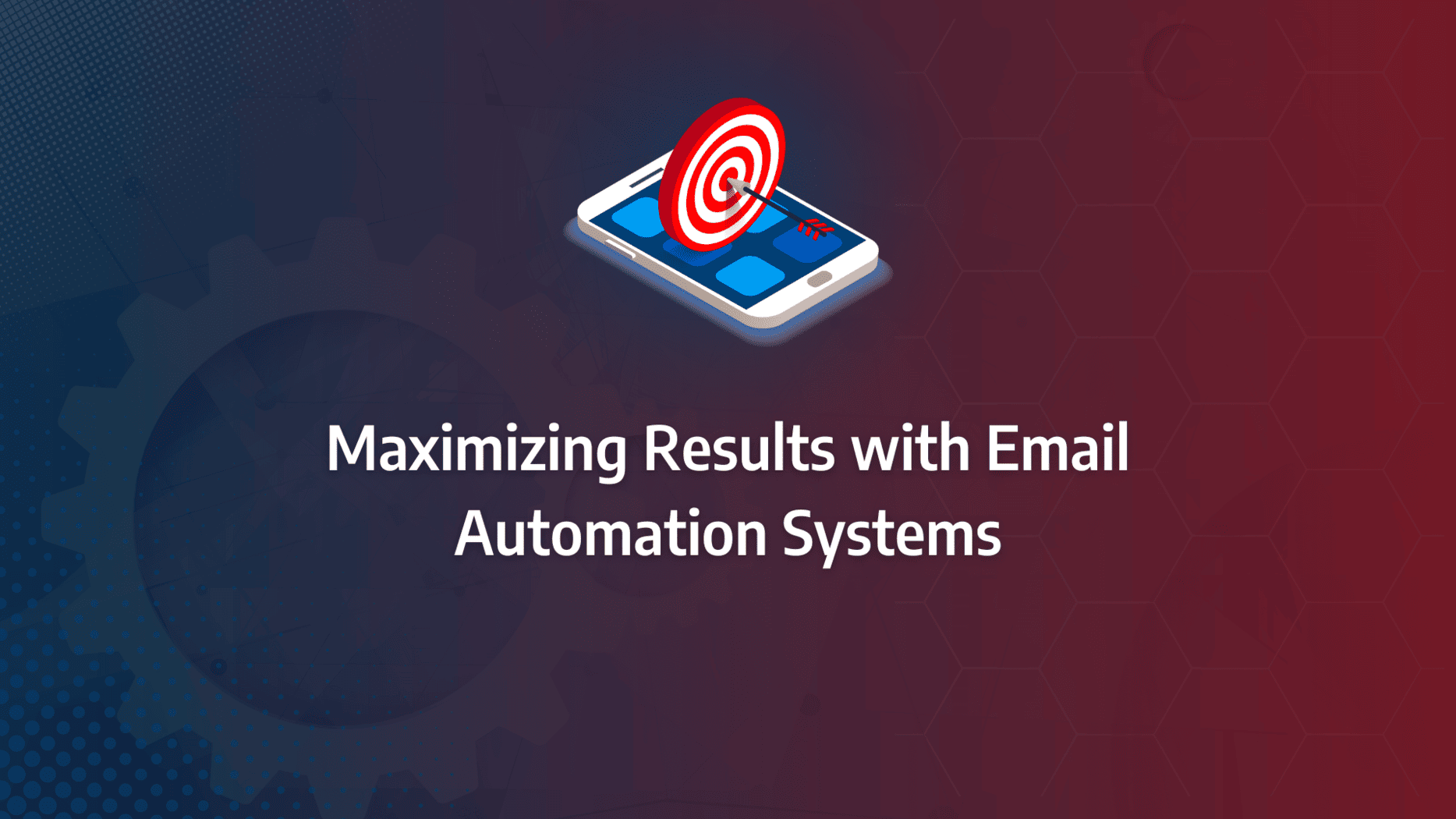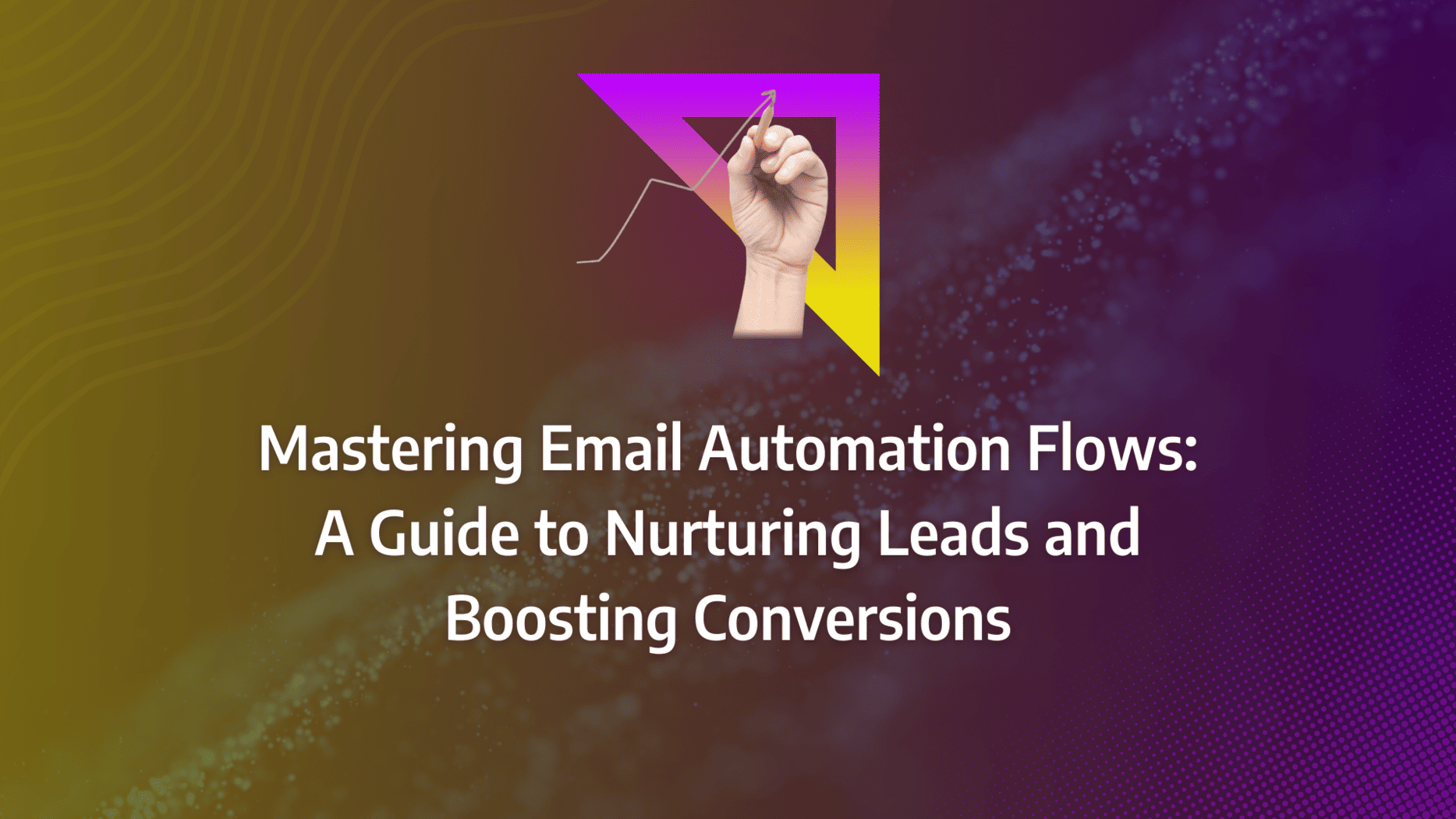Are your email campaigns delivering the results you need? If your current approach isn’t driving the engagement and ROI you’re after, it’s time to rethink your strategy.
The key lies in precision—creating tailored email journeys that resonate with your audience at every touchpoint. This guide unpacks how you can master email automation by harnessing the power of personalisation, segmentation, and data-driven insights.
- Tailor your email automation strategy by leveraging personalisation and segmentation to enhance engagement and relevance.
- Use data-driven insights to continuously refine your email campaigns, ensuring they align with broader marketing goals.
- Implement behavioural triggers and A/B testing to optimise the timing and content of your emails for maximum impact.
- Choose the right email automation tools that fit your business needs, enabling you to efficiently manage and scale your campaigns.
- Regularly monitor and analyse your email performance metrics to identify areas for improvement and maximise ROI.
- Ensure your automated email journeys are designed to guide your audience smoothly through each stage of the customer lifecycle.
Email automation, or email marketing automation, refers to the process of sending tailored emails to multiple recipients at optimal times, without manual intervention. Through tracking data such as engagement rates and behaviour, the content of each email can be customised to suit individual prospects. This ensures that each recipient receives the most relevant message, driving higher engagement and, ultimately, conversions.
For the best results, your email automation strategy should be seamlessly integrated with your broader marketing and sales tools. One key integration is with Customer Relationship Management (CRM) systems, which track customer data and preferences. By linking email automation with CRM, your email content can be automatically personalised based on each customer’s behaviour, such as their purchase history or interaction with previous campaigns. Additionally, email automation solutions can be connected to marketing analytics platforms to monitor crucial metrics like email open rates and click-through rates. This integrated approach enables you to go beyond simply automating emails, offering a data-driven, highly targeted method for enhancing customer engagement.
Types of Email Automation Campaigns
Email marketing is an invaluable tool for small businesses aiming to acquire, engage, and retain customers. The following are four types of automated email campaigns that can help accelerate business growth:
1. Email Newsletters: One of the most widely used types of automated email campaigns is the email newsletter. For small businesses, newsletters can deliver valuable knowledge, insights, and updates directly to subscribers’ inboxes. It’s crucial to ensure the content you share is engaging and adds genuine value. You can achieve this by incorporating thought leadership articles, practical how-tos, and announcements about new products or services. To assess whether your newsletter is effective, ask yourself whether the content is fostering stronger relationships with subscribers, enhancing engagement, and building long-term loyalty.
2. Acquisition Emails: Acquisition emails are designed to convert leads who have shown interest in your business but haven’t yet become paying customers. By offering compelling deals or delivering educational content, you can illustrate the value of your products or services. These emails are instrumental in guiding leads through the conversion funnel more swiftly, driving business growth and increasing revenue. If your goal is to move leads from passive interest to active customers, acquisition emails should be a key part of your email automation strategy.
3. Retention Emails: Retention emails are ideal for businesses that already have some experience with email marketing campaigns. This type of email helps maintain ongoing communication with customers, especially those who haven’t interacted with your emails recently. By sending requests for feedback or exclusive offers, you can keep your business top of mind, ensuring customers don’t drift away. Retention emails are a vital part of any email automation strategy, as they play a significant role in preserving the loyalty of your hard-earned customers.
4. Promotional Emails: Promotional emails focus on driving sales, encouraging signups, or promoting new product launches. These emails are designed to present enticing offers that motivate your audience to make a purchase or take action. By sending targeted promotions to engaged subscribers, you can reward loyalty and introduce your latest products or services. Promotional emails are also effective for cross-selling and upselling within your existing customer base, making them an essential component of your automated email campaign strategy.
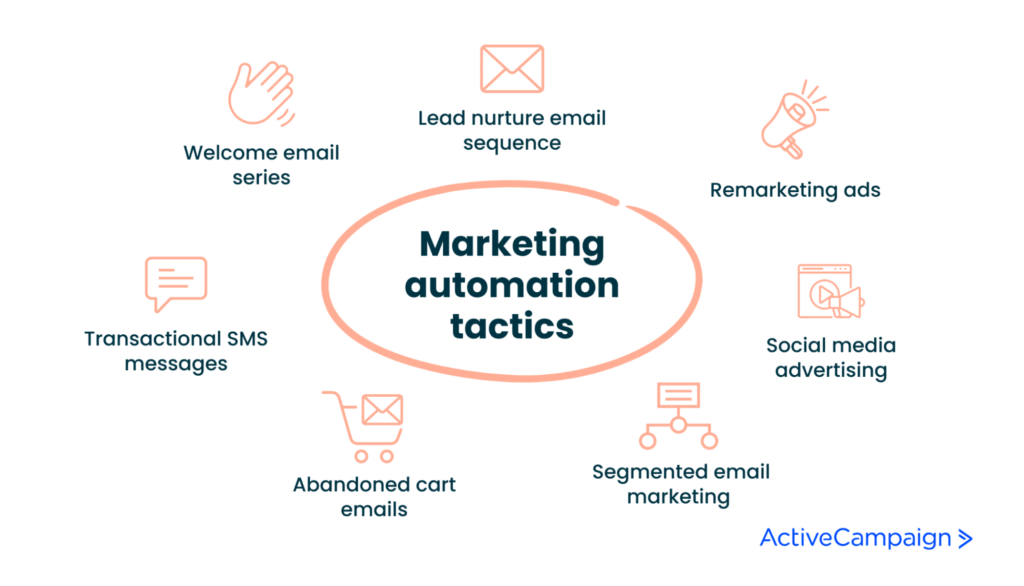
What Matters Most?
Moving beyond generic messaging allows us to tailor communications effectively, making a substantial impact. Additionally, incorporating storytelling into email campaigns fosters deeper emotional connections with recipients, which often leads to higher open and click-through rates. It is also crucial to build permission-based lists, as this strategy not only fosters trust but typically results in more meaningful interactions, reinforcing the value of consent in our marketing efforts.Get In Touch
Characteristics of an Effective Email Automation Strategy
To ensure success with email marketing, a well-crafted email automation strategy is essential. It’s not simply about sending messages to your audience; it’s about using intelligent, targeted methods to engage and convert prospects effectively. Below are five key characteristics that form the foundation of an effective email automation strategy.
1. Use the Right List-Building Strategies
The backbone of any successful automated email campaign lies in the quality of your email list. Without a targeted and relevant list, even the best-crafted emails won’t yield results. You must employ list-building techniques tailored to your target audience. For example, a B2B company may see great success promoting a case study on LinkedIn to gather qualified subscribers, while the same approach could fall flat for a B2C brand. Tailoring your approach to your audience is one of the most critical email automation best practices.
2. Practise Good Email List Hygiene
Maintaining a clean email list is another vital component of a successful email automation strategy. Regularly reviewing your subscriber list and removing inactive contacts ensures that your sender reputation remains intact. Not only does this improve email deliverability, but it also helps you focus your efforts on those genuinely interested in your content. This is one of the email automation solutions that directly impacts the performance of your email campaigns.
3. Keep Your List Warm
It’s important to keep your subscribers engaged by maintaining regular contact. If too much time passes between emails, your audience may forget who you are, leading to lower open rates and reduced conversions. Consistently reaching out with relevant content helps to maintain interest and engagement. If some of your subscribers become inactive, you can implement a re-engagement campaign to bring them back into the fold, a tactic critical to any effective automated email campaign.
4. Focus on One Objective Per Campaign
Every campaign and email within your email automation strategy should focus on a single, clear objective. Attempting to achieve multiple goals in a single campaign can confuse your audience and dilute your message. Whether you want to promote a specific product, gather feedback, or drive signups, keeping a singular focus helps improve conversion rates and makes your message more impactful.
5. Define and Track the Right KPIs
Successful email marketing goes beyond crafting compelling messages; it requires measuring the effectiveness of your efforts. To do this, you must define and track the appropriate key performance indicators (KPIs) for each campaign. These KPIs could include open rates, click-through rates, and conversions, depending on your campaign’s objective. By tracking these metrics, you can fine-tune your approach and continually improve your email automation strategy.
10 Steps to Craft a High-Impact Welcome Email
Before diving into your welcome email sequence, it’s critical to establish a strong email automation strategy. A clear roadmap for introducing yourself and guiding subscribers through the subsequent emails is key. You need to consider what your final goal is and how each email builds towards it.
1. Determine Your Target Audience
Knowing exactly who you’re speaking to is the foundation of any successful automated email campaign. If your ideal customer opens your email, what do you want them to see? Think about their needs, pain points, and desires. Whether they’re looking for a new solution to a pressing problem, or guidance on how to improve their business operations, your email should address those concerns and offer them real value.
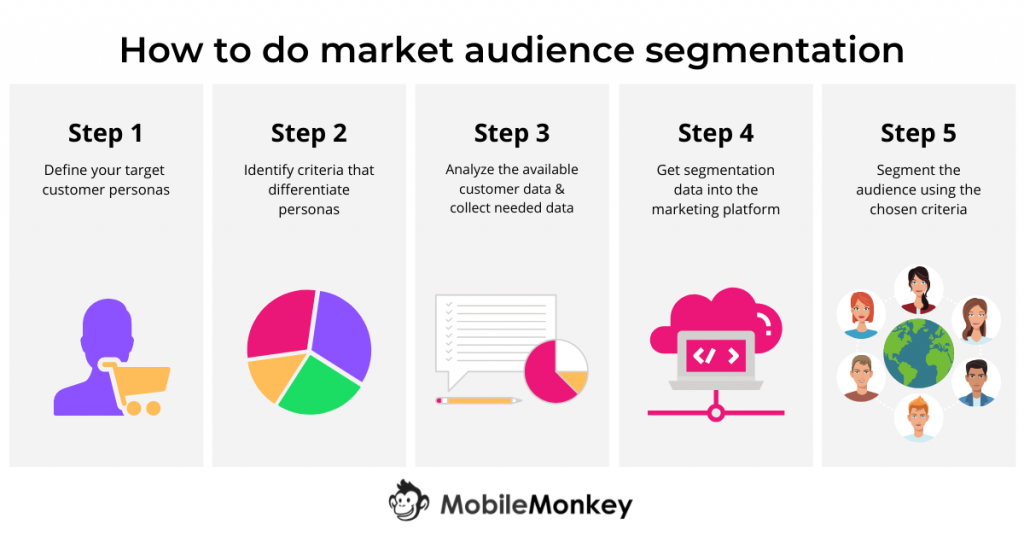
2. Craft Compelling Subject Lines
Your subject line is the gateway to your email. It determines whether your email gets opened or sent straight to the trash. To optimise open rates, write concise and compelling subject lines that spark curiosity. For instance, a teaser such as, “Don’t Miss Out: Limited-Time Offer Inside”, can create a sense of urgency. The shorter and more direct, the better – make every word count.
Source: DMA
Your subscribers have given you permission to enter their inboxes, a privilege you shouldn’t take lightly. In your first email, express genuine gratitude. Show appreciation for their time and interest. Treat them like individuals, not just another name on a list. A simple thank you can go a long way in building trust from the outset.
4. Keep Emails Short and Focused
When it comes to emails, less is more. Most readers spend just a few seconds skimming through an email, so keep your content concise. A well-constructed welcome email doesn’t need to exceed 200-300 words. Share only the most critical information upfront, and save the finer details for later emails in your sequence. This helps maintain engagement without overwhelming the reader.
5. Address Common Subscriber Concerns
When someone subscribes to an email list, there are often lingering doubts: “Is this content going to be worth my time?” or “Will I be bombarded with irrelevant messages?” Tackle these concerns early by reinforcing the value of your emails. Remind your reader why they signed up and assure them that your content is relevant, actionable, and tailored to their interests.
6. Set Expectations Clearly
Clarity from the outset is crucial for setting expectations and avoiding unsubscribes. Let your subscribers know how frequently you’ll be emailing them and what kind of content they can expect. This not only builds trust but helps ensure that only those genuinely interested remain on your list, improving the overall quality of your email automation strategy.
7. Spark Curiosity About What’s Coming Next
Use your welcome sequence to generate excitement for future emails. Drop hints about upcoming content or special offers. For example, you might say, “Keep an eye out for our next email where we’ll reveal an exclusive offer just for you.” Building anticipation encourages recipients to actively look out for your next email, which is a hallmark of an effective automated email campaign.
8. Deliver What You Promised
Trust is built when you consistently deliver on your promises. If your opt-in offered a free ebook, a discount, or exclusive content, ensure you provide it in the first email. Surprising subscribers with an unexpected bonus or additional value can also reinforce trust and create a positive brand experience.
9. Leverage Storytelling to Build Connections
One of the most powerful ways to engage your audience is through storytelling. Use the second or third email in your sequence to share a relatable story that illustrates your brand’s values or mission. This helps humanise your business and forge a deeper connection with your audience. Make sure your story aligns with the overarching goals of your email automation strategy.
10. Include a Call to Action in Every Email
Every email in your sequence should include a clear call to action (CTA). Whether it’s asking your reader to download a resource, take advantage of a limited-time offer, or engage with your content in some way, a CTA is critical for moving subscribers along the conversion funnel. A small, incremental CTA in each email (like a “micro-yes”) builds trust and engagement, ultimately leading to the final CTA in your sequence.
Presenting Your Final CTA
As you wrap up your welcome sequence, your final email should present the most important CTA. This is the moment to ask your subscribers to take the next step – whether it’s making a purchase, signing up for a service, or committing to a subscription. The goal is to turn passive readers into active customers who are ready to engage further with your business.
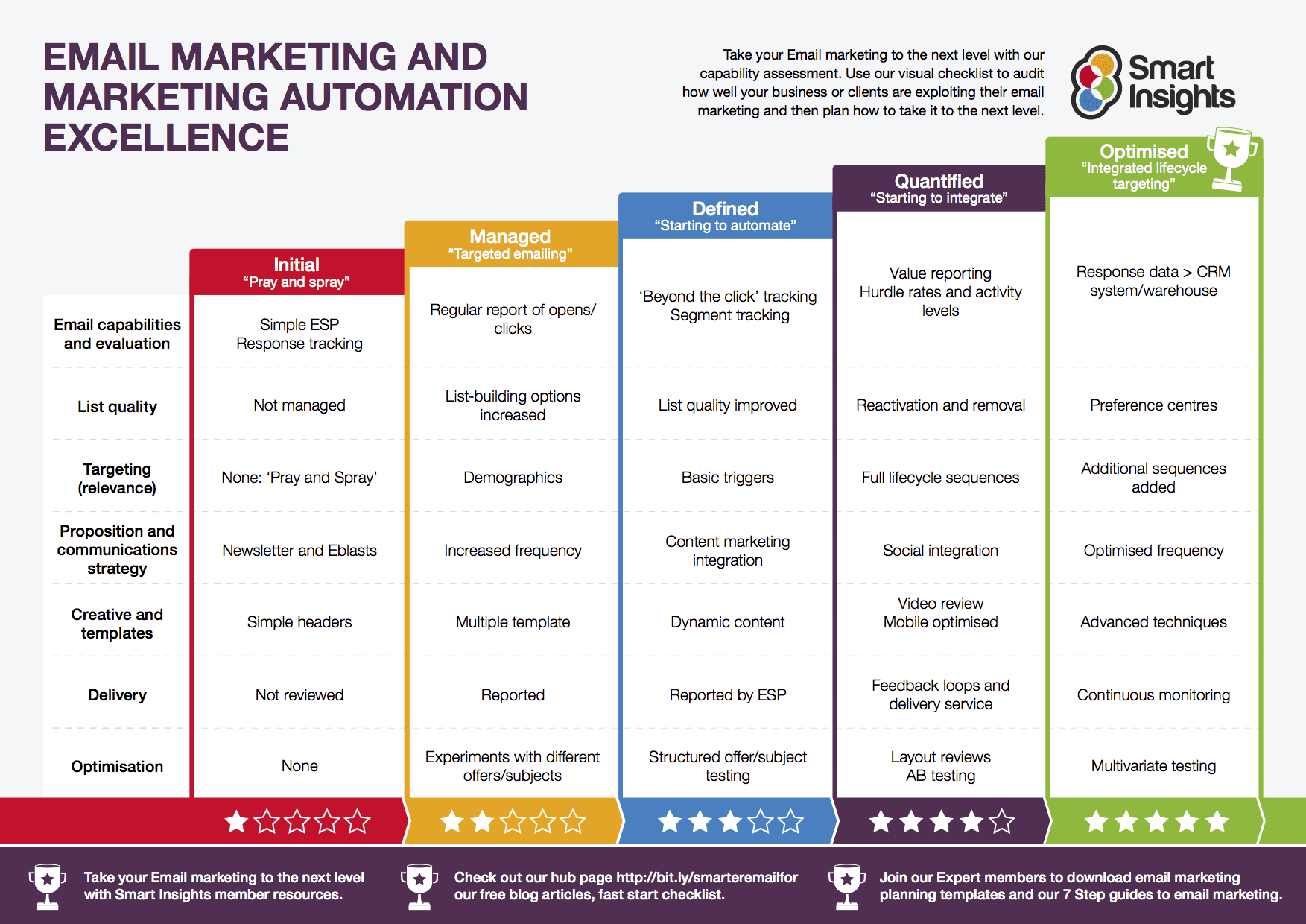
Email Automation Strategy Examples
A well-executed email automation strategy can significantly improve customer engagement and conversions. Below are some key examples of effective automations and how they can be applied to your business.
Abandoned Cart Automation
Imagine a scenario where a customer adds items to their shopping cart but gets distracted before completing the purchase—maybe by a phone call, or they’ve been pulled away to deal with something else. This is where abandoned cart automation steps in.
An automated email campaign will remind customers of the items they’ve left behind in their shopping cart, prompting them to complete the transaction. The email can dynamically populate with product images and details, making it personal and specific to each user.
Pro Tip: A/B testing is crucial to fine-tune the timing of your abandoned cart emails. Brands selling high-value items might benefit from a longer delay before the email is sent, giving the customer time to research and consider their purchase. Conversely, for more impulse-driven products, a shorter delay could yield better results.
Source: HubSpot
Thank You Email
Who doesn’t appreciate a thoughtful thank you? The thank you email automation is sent immediately after a customer completes their purchase. It serves not only to express gratitude but also to foster long-term brand loyalty.
This simple gesture can have a profound impact, especially in today’s competitive online landscape. By acknowledging the customer’s decision to choose your product or service, you make them feel valued. A personalised thank you message can go a long way in encouraging repeat purchases.
Pro Tip: Experiment with A/B testing by comparing text-only emails to those with images. In some cases, a plain text email that feels like a personal message can outperform highly designed emails packed with visuals. Test both to determine what resonates best with your audience.
Instructional Email
After thanking your customers, the next step is ensuring they get the most from their purchase. This is where instructional emails come into play. An instructional email automation strategy helps customers understand how to use, maintain, or assemble their new products, reducing customer service enquiries and preventing dissatisfaction due to improper use.
By providing clear, easy-to-follow instructions, you improve the customer experience, which in turn boosts the likelihood of repeat business.
Pro Tip: As long as the email series contains no sales-driven content, it can be classified as transactional. This ensures all customers receive the message, even if they’ve opted out of marketing emails.
Cross-Sell and Up-Sell Automations
Customers may sometimes feel overwhelmed by the number of options available on your site, or they may simply lack the time to browse thoroughly. Cross-sell and up-sell automations can bridge this gap, suggesting complementary products or services based on the customer’s previous purchases.
By integrating email automation solutions with your CRM or recommendation engine, you can personalise these suggestions, making them relevant to each individual shopper. Whether it’s showcasing a related product or recommending an upgraded version, this type of automated email campaign can drive additional revenue while improving customer satisfaction.
Pro Tip: Timing is everything. After a purchase, consider implementing a delay before sending a cross-sell or up-sell email, giving the customer time to experience their initial purchase before offering complementary items.
How to Build an Effective Email Automation Strategy for Small Businesses
Developing a successful email automation strategy is crucial for small businesses aiming to optimise customer engagement and boost conversions. Below are five essential tips to help you build a highly effective strategy tailored to your audience’s needs.
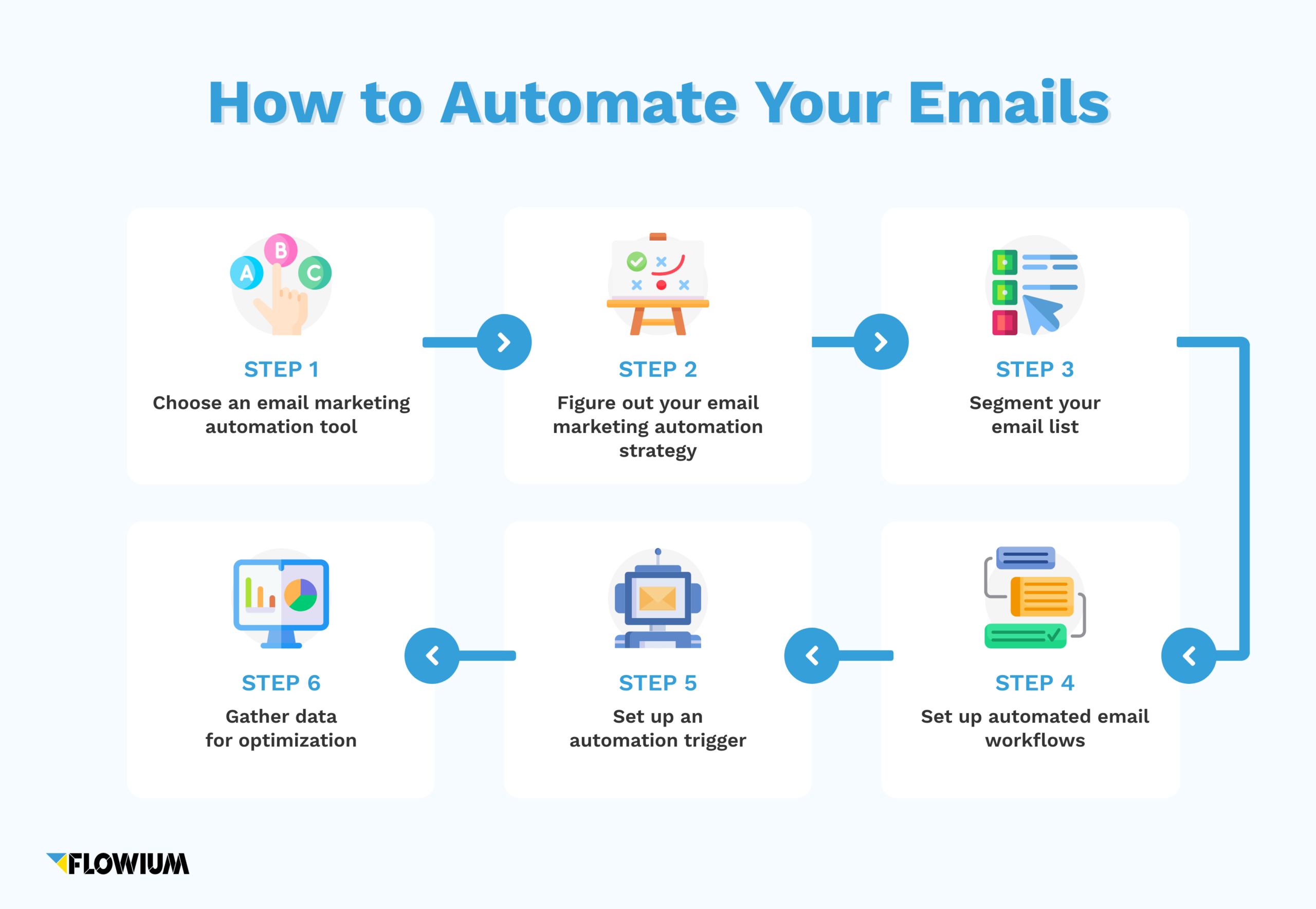
1. Select a Reliable Email Marketing Automation Tool
The foundation of any great email automation strategy is the platform you choose. Your tool must be credible, reliable, and capable of delivering your emails without landing in spam folders. The wrong platform could lead to poor open rates and a dismal return on investment. Therefore, it’s crucial to opt for an automation tool that offers robust features and ongoing support. Make sure to work with providers who understand the nuances of email automation and can help you navigate potential technical issues.
2. Segment Your Audience
One of the biggest mistakes businesses make is sending the same message to everyone on their list. This can dilute the effectiveness of your automated email campaign and lead to disengaged recipients. A key email automation best practice is to segment your audience based on specific actions they’ve taken, how they discovered your business, or even their purchasing history. By doing this, you ensure each email is targeted, relevant, and more likely to convert.
Building a focused, targeted list is far more effective than trying to reach a broader but less engaged audience. Many subscribers may sign up once but never engage with your brand again. A segmented approach allows you to concentrate on your Area of Concentration (AOC), making your campaigns more impactful.
3. Personalise Your Message and Call to Action
The real power of an effective email automation strategy lies in personalisation. Sending generic emails will only distance your subscribers, while personalising messages helps foster stronger relationships. However, personalisation doesn’t mean being overly familiar. It’s about using data to create messages that resonate with the individual while maintaining professionalism.
Your call to action (CTA) should be clear, direct, and tailored to the recipient. Personalising the CTA based on previous actions, interests, or interactions adds value and significantly increases the likelihood of engagement.
4. Optimise for Mobile-Friendly Design
With mobile devices accounting for an ever-increasing percentage of email opens—68% and climbing—it’s imperative that your emails are optimised for mobile. Mobile users expect emails to be concise, easy to navigate, and quick to load. Ensure your design includes enough clickable space for links and buttons, and craft compelling subject lines that capture attention within seconds.
This mobile-first approach should be a cornerstone of your email automation strategy, as poor mobile optimisation could result in lost opportunities and lower engagement rates.
5. Analyse and Optimise Your Results
The effectiveness of any automated email campaign depends heavily on data analysis. From the very beginning, you should incorporate split testing (A/B testing) to compare different templates, subject lines, and content styles. Key metrics such as view rate, open rate, click-through rate, and conversion rate will offer valuable insights into how well your strategy is performing.
Our Tactical Recommendations
From our experience, implementing automated follow-ups for non-responders proves essential; clients often witness renewed engagement with leads that might otherwise remain dormant. Moreover, timing email deliveries is pivotal; clients frequently discover that strategic sending can dramatically improve interaction rates. Regularly conducting A/B testing on various email components helps identify what resonates best with audiences, ensuring that our approaches remain relevant and effective.Get In Touch
5 Essential Email Marketing Automation Tools for Small Business Marketers
Selecting the right platform is a critical component of any successful email automation strategy. To help small businesses navigate the crowded marketplace of automation tools, here are five highly recommended solutions that cater to different needs and levels of expertise.
1. SendX
SendX is an intuitive, feature-packed, and affordable email marketing software. Although a relatively new player in the industry, it has earned consistently high reviews across platforms like Capterra and G2Crowd due to its robust functionality and excellent customer service.
You should consider SendX for your small business if:
- Customer support is a priority: SendX offers responsive and efficient customer service, ensuring you receive prompt assistance via chat or email, with minimal wait times compared to competitors.
- You need reliable email deliverability: SendX optimises email campaigns by using over 30 parameters, including previous engagement behaviour, time zones, and domain preferences. This greatly improves your chances of reaching the inbox and avoiding spam filters.
- Cost-efficiency is key: SendX is an affordable email automation solution, with pricing starting as low as $9.99 per month, making it an ideal choice for businesses looking to grow without breaking the bank.
2. ActiveCampaign
ActiveCampaign is a powerful all-in-one marketing platform that provides tools for email marketing, automation, and CRM management. It offers advanced features at a reasonable price, making it a solid option for businesses looking to streamline their marketing efforts.
You should choose ActiveCampaign for your small business if:
- You need an all-in-one tool: ActiveCampaign is ideal for advanced marketers who want to manage email automation, CRM, and various marketing activities under one platform.
- You’re seeking advanced capabilities at a low price: Despite its feature-rich nature, ActiveCampaign remains one of the most affordable tools in the market for the level of functionality it offers.
- You require workflow editing tools: ActiveCampaign’s visual workflows, while not as advanced as some competitors, still deliver strong performance at a budget-friendly price, enabling you to create complex email journeys with ease.
3. Mailchimp
Mailchimp is arguably the most well-known and widely used email marketing platform, offering simplicity, affordability, and strong integration capabilities. It’s particularly popular among small businesses due to its ease of use and free starting tier.
You should choose Mailchimp for your small business if:
- You want to start for free: Mailchimp’s Forever Free plan allows businesses to send up to 12,000 emails to 2,000 contacts, making it ideal for start-ups and small businesses looking to test the waters of email marketing.
- You prefer simplicity: Mailchimp’s user interface is one of the simplest on the market. If you value clean, straightforward tools, this platform is an excellent choice.
- You need seamless integrations: Mailchimp integrates with a vast range of software. If your business uses multiple tools and platforms, Mailchimp offers native integrations that simplify workflows without needing third-party connectors like Zapier.
4. ConvertKit
ConvertKit is specifically designed for professional bloggers, content creators, and online course providers. It focuses on simplicity while offering strong automation features geared towards those who primarily deliver digital products or educational content.
You should choose ConvertKit for your small business if:
- You sell digital or info products: ConvertKit comes pre-built with templates and automations tailored to the needs of online course providers and digital marketers, offering a low barrier to entry.
- You prefer simple tracking: ConvertKit’s approach to tracking and reporting is straightforward, avoiding overly complex metrics, which can sometimes bog down more advanced users.
- You send mostly text-based emails: Unlike many platforms that emphasise design-heavy emails, ConvertKit focuses on plain text-based emails, which have been shown to perform better for bloggers and content creators.
5. Drip
As the world’s first ECRM (Ecommerce CRM), Drip stands out for its comprehensive marketing automation capabilities. While more expensive than other options, it offers unparalleled functionality, particularly for eCommerce marketers and advanced users looking to leverage detailed customer journeys.
You should choose Drip for your small business if:
- You’re an advanced marketer: Drip excels in creating sophisticated marketing automation. If you require high-level workflows and advanced capabilities, this tool is hard to beat.
- You need the best visual journey builder: Drip’s workflow editor is the most advanced on the market, allowing you to map out detailed customer journeys and automate complex sequences.
- You rely on Facebook ads: Drip integrates deeply with Facebook, making it an ideal platform for eCommerce marketers who rely on social advertising to drive sales.
